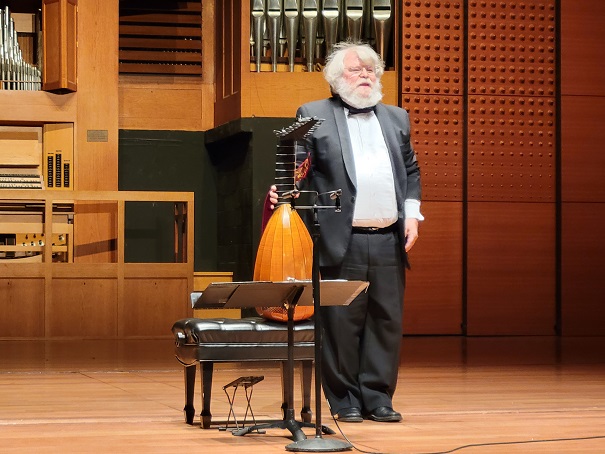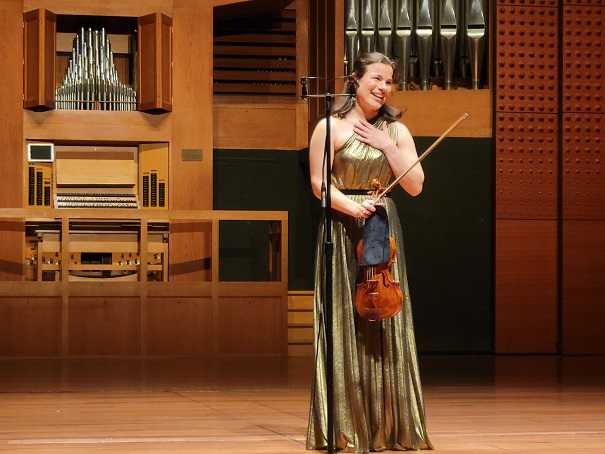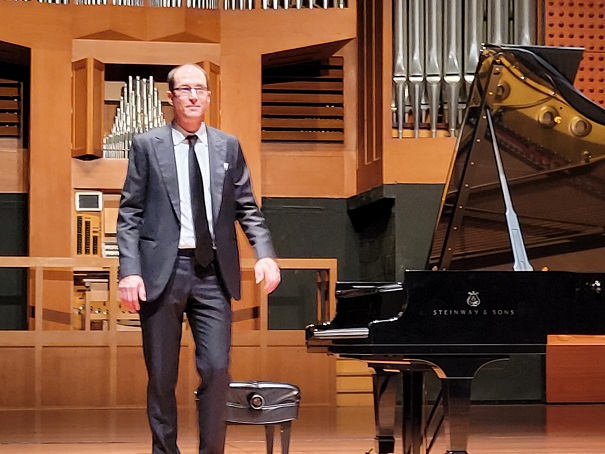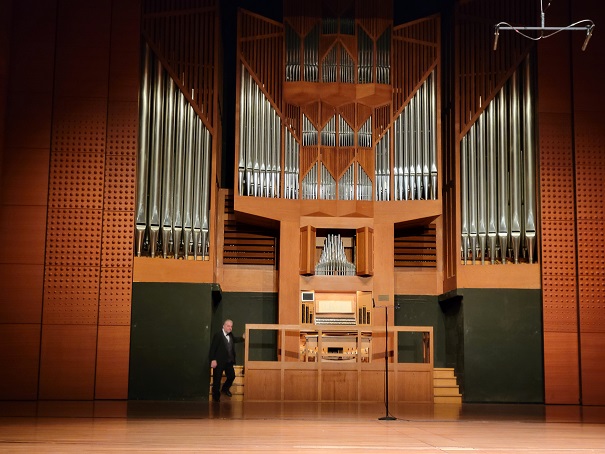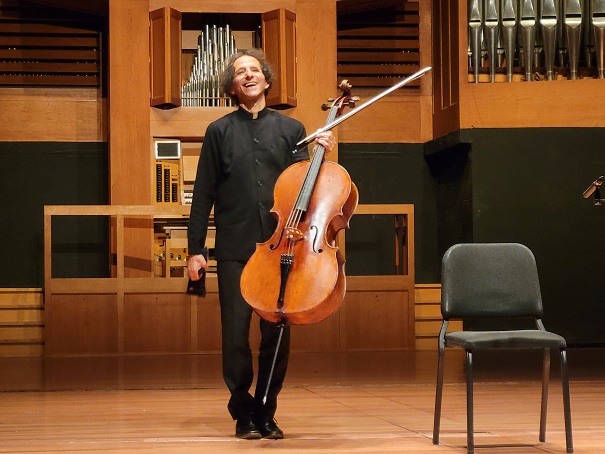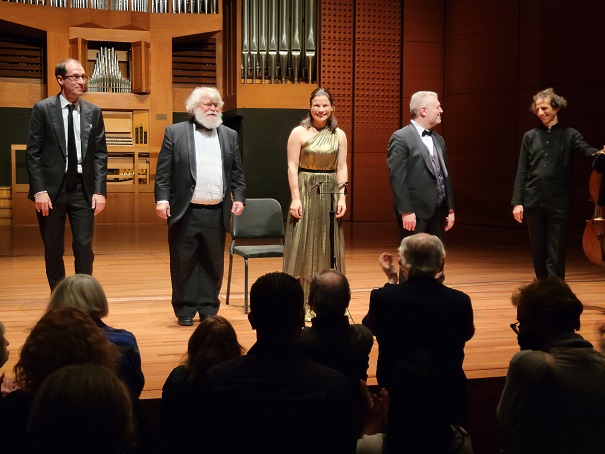Concert Diary: Solo Bach with the CMS
December 11, 2021
New York, N.Y.
What a great idea for a concert! All Johann Sebastian Bach, but entirely solo Bach. Five compositions, but all for different solo instruments: lute, violin, piano, organ, cello. Musicians one-on-one with their instruments, bringing forth music conceived three centuries ago but still fresh and alive and dancing.
As Chamber Music Society of Lincoln Center co-Artistic Director Wu Han mentioned in some introductory remarks to the audience at Alice Tully Hall last night, many musicians reacted to the isolation of COVID by turning to solo music, and very often that was the music of Bach. So now, they share it with us.
Bach wrote music for several different solo instruments, but I had forgotten about the lute, and first up was Paul O’Dette playing the Suite in G minor for Lute (BWV 995), composed about 1729. Like three other works on the program, this is a suite of abstracted Baroque dance movements of different tempos, meters, and characteristic rhythms with the names of Allemande, Courante, Sarabande, Gavotte, and invariably ending with the Gigue.
I don’t think I’ve ever heard a solo lute in concert. It’s a very delicate sound, softer than a guitar I think, and Alice Tully Hall got very still and quiet in response. I think I would have preferred hearing the lute in a more intimate setting (like a cabin with a fire going) but it was a very magical performance nonetheless. Fortunately, people have been wearing face masks out in public, consequently reducing the number of colds, and audience coughing seems to be all time low.
Here is Paul O’Dette during curtain calls:
Next up was something that sounded completely different as violinist Bella Hristova began the dramatic and exuberant Prelude of Bach’s Partita No. 3 in E major for Violin (BWV 1006). The is the last of Bach’s six Sonatas and Partitas for solo violin, and like many violinists, Ms. Hristova has probably been playing these pieces since childhood. She played without a score yesterday evening, deftly managing the often tricky double stops. The second movement is a fairly rare occurrence of a Loure, slow, lyrical, wistful, balancing the moderate tempo Menuet movements later on, which then lead into a vigorous Bourrée and Gigue.
Most of Bach’s solo music is for the harpsichord or organ, and the first of those categories was represented in this concert by the French Suite No. 3 in B minor for Keyboard (BWV 814), performed by Gilles Vonsattel. I’m always a little uneasy hearing Bach’s harpsichord music performed on a modern piano. It’s a very different sound from what Bach heard and for which he conceived the music. Vonsattel’s playing was crisp and precise, although not neglecting some nice pianistic legato in the slow and melancholy Sarabande movement. Here is Gilles Vonsattel in curtain calls:
Normally the organ at Alice Tully Hall is hidden behind panels at the back of the stage. It might be that some people don’t even know it exists! I certainly had forgotten about it. But there it was, unveiled, a constant presence during the concert like Chekhov’s rifle, and following intermission, organist Stephen Tharp ascended the short stairway to the keyboard to play Bach’s Partitas on O Gott, du frommer Gott (BWV 767). This is the only work on the program not composed in the 1720s (instead dating from 1707 – 08) and not a suite of Baroque dances. Instead the 11 partita movement form a chorale theme and variations. Stephen Tharp seemed to delight in showing off the various colors of this majestic organ for the contrapuntal variations (all in the service of the music, of course), and unleashing the full sound for the penultimate Partita and the final Presto.
Here is Stephen Tharp descending from the keyboard following the performance:
Perhaps the archtypal image of a musician communing with Bach is a cellist playing one of Bach’s six Cello Suites. While the violin pieces are often flashy and played standing up, the Cello Suites are more intimate and contemplative.
The concert concluded with the Suite No. 6 in D major for Cello (BWV 1012), which was apparently written for a slightly different instrument with five strings rather than four, thus presenting challenges for the modern cellist. Cellist Colin Carr played without a score of course, and by this time, the dramatic arc of Bach’s suite movements was evident, beginning with a bouncy Prelude followed by a long slow Allemande, but my favorite here is the slow and lyrical Sarabande with its frequent double stops. Here is Colin Carr in curtain calls:
He was then joined on stage by the other four musicians for final audience approval:
This was quite a wonderful concert, and judging by the timestamp on that final photo, it had gone on for two hours and twenty minutes. I only wish that it could have been extended another fifteen to include Bach’s wonderful Partita for Flute in A minor (BWV 1013). Maybe next time.
